- Home
- Isaac Asimov
Nightfall
Nightfall Read online
THE CITY WILL BURN
“If you were in Darkness, what would you want more than anything else—what would it be that every instinct would call for?”
“Why, light, I suppose.”
“And how would you get light?”
Theremon pointed to the switch on the wall. “I’d turn it on.”
Sheerin said, “Where will light come from, when the generators stop? You’d be out on the street in the Darkness. And you want light. So you burn something. Ever see a forest fire? Ever go camping and cook a stew over a wood fire? Heat isn’t the only thing burning wood gives off, you know. It gives off light, and people are very aware of that. And when it’s dark they want light, and they’re going to get it.”
“So they’ll burn logs,” Theremon said without much conviction.
“They’ll burn whatever they can get. They’ve got to have light. They’ve got to burn something, and wood won’t be handy, not on city streets. So they’ll burn whatever is nearest. A pile of newspapers? Why not? What about the newsstands that the papers on sale are stacked up in? Burn them too! Burn clothing. Burn books. Burn roof-shingles. Burn anything. The people will have their light—and every center of habitation goes up in flames! There is the end of the world you used to live in.”
“A PLEASURE … THIS IS A VERY GOOD BOOK.”
—The Magazine of Fantasy & Science Fiction
All of the characters in this book are fictitious, and any resemblance to actual persons, living or dead, is purely coincidental.
This edition contains the complete text of the original hardcover edition.
NOT ONE WORD HAS BEEN OMITTED.
NIGHTFALL
A Bantam Spectra Book / published by arrangement with Doubleday
PUBLISHING HISTORY
Doubleday edition published November 1990 Bantam edition / September 1991
SPECTRA and the portrayal of a boxed “s” are trademarks of Bantam Books,
a division of Random House, Inc.
This novel is based on the true story “Nightfall” by Isaac Asimov, which first appeared in Astounding Science Fiction in 1941. Certain character and place names have been changed at the author’s discretion.
All rights reserved.
Copyright © 1990 by Nightfall, Inc. and Agberg, Ltd.
Library of Congress Catalog Card Number: 90-32469.
No part of this book may be reproduced or transmitted in any form or by any means, electronic or mechanical, including photocopying, recording, or by any information storage and retrieval system, without permission in writing from the publisher,
eISBN: 978-0-307-79239-6
Bantam Books are published by Bantam Books, a division of Random House, Inc. Its trademark, consisting of the words “Bantam Books” and the portrayal of a rooster, is Registered in U.S. Patent and Trademark Office and in other countries. Marca Registrada. Bantam Books, New York, New York.
v3.1
TO THE READER
Kalgash is an alien world and it is not our intention to have you think that it is identical to Earth, even though we depict its people as speaking a language that you can understand, and using terms that are familiar to you. Those words should be understood as mere equivalents of alien terms—that is, a conventional set of equivalents of the same sort that a writer of novels uses when he has foreign characters speaking with each other in their own language but nevertheless transcribes their words in the language of the reader. So when the people of Kalgash speak of “miles,” or “hands,” or “cars,” or “computers,” they mean their own units of distance, their own grasping-organs, their own ground-transportation devices, their own information-processing machines, etc. The computers used on Kalgash are not necessarily compatible with the ones used in New York or London or Stockholm, and the “mile” that we use in this book is not necessarily the American unit of 5,280 feet. But it seemed simpler and more desirable to use these familiar terms in describing events on this wholly alien world than it would have been to invent a long series of wholly Kalgashian terms.
In other words, we could have told you that one of our characters paused to strap on his quonglishes before setting out on a walk of seven vorks along the main gleebish of his native znoob, and everything might have seemed ever so much more thoroughly alien. But it would also have been ever so much more difficult to make sense out of what we were saying, and that did not seem useful. The essence of this story doesn’t lie in the quantity of bizarre terms we might have invented; it lies, rather, in the reaction of a group of people somewhat like ourselves, living on a world that is somewhat like ours in all but one highly significant detail, as they react to a challenging situation that is completely different from anything the people of Earth have ever had to deal with. Under the circumstances, it seemed to us better to tell you that someone put on his hiking boots before setting out on a seven-mile walk than to clutter the book with quonglishes, vorks, and gleebishes.
If you prefer, you can imagine that the text reads “vorks” wherever it says “miles,” “gliizbiiz” wherever it says “hours,” and “sleshtraps” where it says “eyes.” Or you can make up your own terms. Vorks or miles, it will make no difference when the Stars come out.
—I.A.
—R.S.
If the stars should appear one night in a thousand years, how would men believe and adore, and preserve for many generations the remembrance of the city of God!
—EMERSON
Other world! There is no other world! Here or nowhere is the whole fact.
—EMERSON
Contents
Cover
Title Page
Copyright
To the Reader
Epigraph
One: Twilight
Chapter 1
Chapter 2
Chapter 3
Chapter 4
Chapter 5
Chapter 6
Chapter 7
Chapter 8
Chapter 9
Chapter 10
Chapter 11
Chapter 12
Chapter 13
Chapter 14
Chapter 15
Chapter 16
Chapter 17
Two: Nightfall
Chapter 18
Chapter 19
Chapter 20
Chapter 21
Chapter 22
Chapter 23
Chapter 24
Chapter 25
Chapter 26
Chapter 27
Three: Daybreak
Chapter 28
Chapter 29
Chapter 30
Chapter 31
Chapter 32
Chapter 33
Chapter 34
Chapter 35
Chapter 36
Chapter 37
Chapter 38
Chapter 39
Chapter 40
Chapter 41
Chapter 42
Chapter 43
Chapter 44
Dedication
Other Books by This Author
About the Authors
ONE
TWILIGHT
[1]
It was a dazzling four-sun afternoon. Great golden Onos was high in the west, and little red Dovim was rising fast on the horizon below it. When you looked the other way you saw the brilliant white points of Trey and Patru bright against the purplish eastern sky. The rolling plains of Kalgash’s northernmost continent were flooded with wondrous light. The office of Kelaritan 99, director of the Jonglor Municipal Psychiatric Institute, had huge windows on every side to display the full magnificence of it all.
Sheerin 501 of Saro University, who had arrived in Jonglor a few hours before at Kelaritan’s urgent request, wondered why he wasn�
��t in a better mood. Sheerin was basically a cheerful person to begin with; and four-sun days usually gave his normally ebullient spirits an additional lift. But today, for some reason, he was edgy and apprehensive, although he was trying his best to keep that from becoming apparent. He had been summoned to Jonglor as an expert on mental health, after all.
“Would you like to start by talking with some of the victims?” Kelaritan asked. The director of the psychiatric hospital was a gaunt, angular little man, sallow and hollow-chested. Sheerin, who was ruddy and very far from gaunt, was innately suspicious of anyone of adult years who weighed less than half of what he did. Perhaps it’s the way Kelaritan looks that’s upsetting me, Sheerin thought. He’s like a walking skeleton. —“Or do you think it’s a better idea for you to get some personal experience of the Tunnel of Mystery first, Dr. Sheerin?”
Sheerin managed a laugh, hoping it didn’t sound too forced.
“Maybe I ought to begin by interviewing a victim or three,” he said. “That way I might be able to prepare myself a little better for the horrors of the Tunnel.”
Kelaritan’s dark beady eyes flickered unhappily. But it was Cubello 54, the sleek and polished lawyer for the Jonglor Centennial Exposition, who spoke out. “Oh, come now, Dr. Sheerin! ‘The horrors of the Tunnel!’ That’s a little extreme, don’t you think? After all, you’ve got nothing but newspaper accounts to go by, at this point. And calling the patients ‘victims.’ That’s hardly what they are.”
“The term was Dr. Kelaritan’s,” said Sheerin stiffly.
“I’m sure Dr. Kelaritan used that word only in the most general sense. But there’s a presupposition in its use that I find unacceptable.”
Sheerin said, giving the lawyer a look compounded equally of distaste and professional dispassion, “I understand that several people died as a result of their journey through the Tunnel of Mystery. Is that not so?”
“There were several deaths in the Tunnel, yes. But there’s no necessary reason at this point to think that those people died as a result of having gone through the Tunnel, Doctor.”
“I can see why you wouldn’t want to think so, Counselor,” said Sheerin crisply.
Cubello looked in outrage toward the hospital director. “Dr. Kelaritan! If this is the way this inquiry is going to be conducted, I want to register a protest right now. Your Dr. Sheerin is here as an impartial expert, not as a witness for the prosecution!”
Sheerin chuckled. “I was expressing my view of lawyers in general, Counselor, not offering any opinion about what may or may not have happened in the Tunnel of Mystery.”
“Dr. Kelaritan!” Cubello exclaimed again, growing red-faced.
“Gentlemen, please,” Kelaritan said, his eyes moving back and forth quickly from Cubello to Sheerin, from Sheerin to Cubello. “Let’s not be adversaries, shall we? We all have the same objective in this inquiry, as I see it. Which is to discover the truth about what happened in the Tunnel of Mystery, so that a repetition of the—ah—unfortunate events can be avoided.”
“Agreed,” said Sheerin amiably. It was a waste of time to be sniping at the lawyer this way. There were more important things to be doing.
He offered Cubello a genial smile. “I’m never really much interested in the placing of blame, only in working out ways of heading off situations where people come to feel that blame has to be placed. Suppose you show me one of your patients now, Dr. Kelaritan. And then we can have lunch and discuss the events in the Tunnel as we understand them at this point, and perhaps after we’ve eaten I might be able to see another patient or two—”
“Lunch?” Kelaritan said vaguely, as though the concept was unfamiliar to him.
“Lunch, yes. The midday meal. An old habit of mine, Doctor. But I can wait just a little while longer. We can certainly visit one of the patients first.”
Kelaritan nodded. To the lawyer he said, “Harrim’s the one to start with, I think. He’s in pretty good shape today. Good enough to withstand interrogation by a stranger, anyway.”
“What about Gistin 190?” Cubello asked.
“She’s another possibility, but she’s not as strong as Harrim. Let him get the basic story from Harrim, and then he can talk to Gistin, and—oh, maybe Chimmilit. After lunch, that is.”
“Thank you,” said Sheerin.
“If you’ll come this way, Dr. Sheerin—”
Kelaritan gestured toward a glassed-in passageway that led from the rear of his office to the hospital itself. It was an airy, open catwalk with a 360-degree view of the sky and the low gray-green hills that encircled the city of Jonglor. The light of the day’s four suns came streaming in from all sides.
Pausing for a moment, the hospital director looked to his right, then to his left, taking in the complete panorama. The little man’s dour pinched features seemed to glow with sudden youth and vitality as the warm rays of Onos and the tighter, sharply contrasting beams from Dovim, Patru, and Trey converged in a brilliant display.
“What an absolutely splendid day, eh, gentlemen!” Kelaritan cried, with an enthusiasm that Sheerin found startling, coming from someone as restrained and austere as he seemed to be. “How glorious it is to see four of the suns in the sky at the same time! How good it makes me feel when their light strikes my face! Ah, where would we be without our marvelous suns, I wonder?”
“Indeed,” said Sheerin.
He was feeling a little better himself, as a matter of fact.
[2]
Half a world away, one of Sheerin 501’s Saro University colleagues was staring at the sky also. But the only emotion she felt was horror.
She was Siferra 89, of the Department of Archaeology, who had been conducting excavations for the past year and a half at the ancient site of Beklimot on the remote Sagikan Peninsula. Now she stood rigid with apprehension, watching a catastrophe come rushing toward her.
The sky offered no comfort. In this part of the world the only real light visible just then was that of Tano and Sitha, and their cold, harsh gleam had always seemed joyless, even depressing, to her. Against the deep somber blue of the two-sun-day sky it was a baleful, oppressive illumination, casting jagged, ominous shadows. Dovim was in view also—barely, just rising now—right on the horizon, a short distance above the tips of the distant Horkkan Mountains. The dim glow of the little red sun, though, was hardly any more cheering.
But Siferra knew that the warm yellow light of Onos would come drifting up out of the east before long to cheer things up. What was troubling her was something far more serious than the temporary absence of the main sun.
A killer sandstorm was heading straight toward Beklimot. In another few minutes it would sweep over the site, and then anything might happen. Anything. The tents could be destroyed; the carefully sorted trays of artifacts might be overturned and their contents scattered; their cameras, their drafting equipment, their laboriously compiled stratigraphic drawings—everything that they had worked on for so long might be lost in a moment.
Worse. They could all be killed.
Worse yet. The ancient ruins of Beklimot itself—the cradle of civilization, the oldest known city on Kalgash—were in jeopardy.
The trial trenches that Siferra had sliced in the surrounding alluvial plain stood wide open. The onrushing wind, if it was strong enough, would lift even more sand than it was already carrying, and hurl it with terrible force against the fragile remains of Beklimot—scouring, eroding, reburying, perhaps even ripping whole foundations loose and hurling them across the parched plain.
Beklimot was a historical treasure that belonged to the entire world. That Siferra had exposed it to possible harm by excavating in it had been a calculated risk. You could never do any sort of archaeological work without destroying something: it was the nature of the job. But to have laid the whole heart of the plain bare like this, and then to have the lousy luck of being hit by the worst sandstorm in a century—
No. No, it was too much. Her name would be blackened for aeons to come if the Be
klimot site was shattered by this storm as a result of what she had done here.
Maybe there was a curse on this place, as certain superstitious people were known to say. Siferra 89 had never had much tolerance for crackpots of any sort. But this dig, which she had hoped would be the crowning achievement of her career, had been nothing but headaches ever since she started. And now it threatened to finish her professionally for the rest of her life—if it didn’t kill her altogether.
Eilis 18, one of her assistants, came running up. He was a slight, wiry man who looked insignificant beside the tall, athletic figure of Siferra.
“We’ve got everything nailed down that we were able to!” he called to her, half breathless. “It’s all up to the gods now!”
She replied, scowling, “Gods? What gods? Do you see any gods around here, Eilis?”
“I simply meant—”
“I know what you meant. Forget it.”
From the other side came Thuvvik 443, the foreman of the workers. He was wild-eyed with fear. “Lady,” he said. “Lady, where can we hide? There is no place to hide!”
“I told you, Thuvvik. Down below the cliff.”
“We will be buried! We will be smothered!”
“The cliff will shelter you, don’t worry,” Siferra told him, with a conviction she was far from feeling. “Get over there! And make sure everybody else stays there!”
“And you, lady? Why are you not there?”
She gave him a sudden startled glance. Did he think she had some private hiding place where she’d be safer than the rest?
“I’ll be there, Thuvvik. Go on! Stop bothering me!”
Across the way, near the six-sided brick building that the early explorers had called the Temple of the Suns, Siferra caught sight of the stocky figure of Balik 338. Squinting, shading his eyes against the chilly light of Tano and Sitha, he stood looking toward the north, the direction from which the sandstorm was coming. The expression on his face was one of anguish.
Balik was their chief stratigrapher, but he was also the expedition’s meteorological expert, more or less. It was part of his job to keep the weather records for them and to watch out for the possibility of unusual events.

 The Return of the Black Widowers
The Return of the Black Widowers The Stars, Like Dust
The Stars, Like Dust Foundation
Foundation David Starr Space Ranger
David Starr Space Ranger I, Robot
I, Robot Puzzles of the Black Widowers
Puzzles of the Black Widowers Casebook of the Black Widowers
Casebook of the Black Widowers The Ugly Little Boy
The Ugly Little Boy Azazel
Azazel Pebble in the Sky
Pebble in the Sky Foundation and Empire
Foundation and Empire The Complete Robot
The Complete Robot Fantastic Voyage
Fantastic Voyage Foundation and Earth
Foundation and Earth The Naked Sun
The Naked Sun The Currents of Space
The Currents of Space Foundation's Edge
Foundation's Edge The Robots of Dawn
The Robots of Dawn Nightfall
Nightfall The Caves of Steel
The Caves of Steel Prelude to Foundation
Prelude to Foundation Nemesis
Nemesis Robot Dreams
Robot Dreams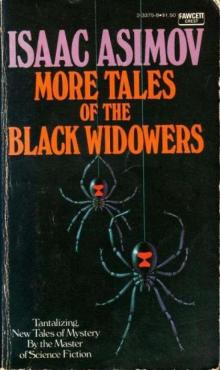 More Tales of the Black Widowers
More Tales of the Black Widowers The Complete Stories
The Complete Stories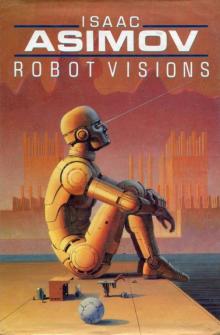 Robot Visions
Robot Visions Lucky Starr And The Moons of Jupiter
Lucky Starr And The Moons of Jupiter Lucky Starr and the Big Sun of Mercury
Lucky Starr and the Big Sun of Mercury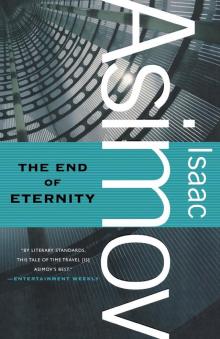 The End of Eternity
The End of Eternity The Bicentennial Man and Other Stories
The Bicentennial Man and Other Stories Lucky Starr And The Rings Of Saturn
Lucky Starr And The Rings Of Saturn Buy Jupiter and Other Stories
Buy Jupiter and Other Stories Forward the Foundation
Forward the Foundation Lucky Starr and the Oceans of Venus
Lucky Starr and the Oceans of Venus The Positronic Man
The Positronic Man The Portable Star
The Portable Star Asimovs Mysteries
Asimovs Mysteries Earth Is Room Enough
Earth Is Room Enough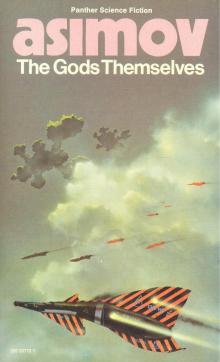 The Gods Themselves
The Gods Themselves Youth
Youth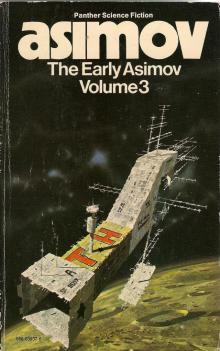 The Early Asimov Volume 3
The Early Asimov Volume 3 The Winds of Change and Other Stories
The Winds of Change and Other Stories Of Time, Space, and Other Things
Of Time, Space, and Other Things Nine Tomorrows
Nine Tomorrows Time Warps
Time Warps Robots and Empire
Robots and Empire Young Star Travelers
Young Star Travelers Fantastic Voyage II: Destination Brain
Fantastic Voyage II: Destination Brain Second Foundation
Second Foundation The Rest of the Robots
The Rest of the Robots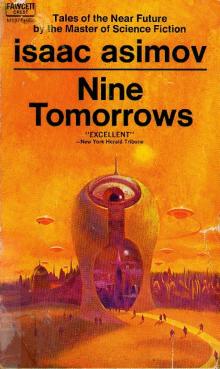 NINE TOMORROWS Tales of the Near Future
NINE TOMORROWS Tales of the Near Future Daneel Olivaw 1 - The Caves of Steel
Daneel Olivaw 1 - The Caves of Steel THE BICENTENNIAL MAN
THE BICENTENNIAL MAN David Starr Space Ranger (lucky starr)
David Starr Space Ranger (lucky starr)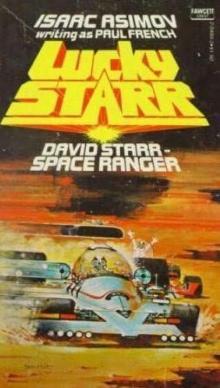 David Starr Space Ranger (ls)
David Starr Space Ranger (ls) Lucky Starr And The Big Sun Of Mercury ls-4
Lucky Starr And The Big Sun Of Mercury ls-4 Pebble In The Sky te-1
Pebble In The Sky te-1 Asimov’s Future History Volume 9
Asimov’s Future History Volume 9 Gold: The Final Science Fiction Collection
Gold: The Final Science Fiction Collection Foundation and Earth f-7
Foundation and Earth f-7 Asimov's New Guide to Science
Asimov's New Guide to Science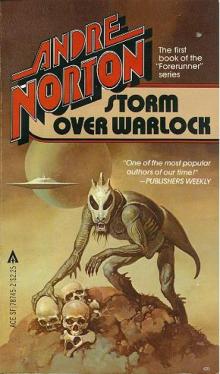 STORM OVER WARLOCK
STORM OVER WARLOCK Stars, Like Dust
Stars, Like Dust Norby The Mixed-Up Robot
Norby The Mixed-Up Robot Found!
Found! Asimov’s Future History Volume 11
Asimov’s Future History Volume 11 Second Foundation f-5
Second Foundation f-5 Asimov’s Future History Volume 15
Asimov’s Future History Volume 15 The Early Asimov. Volume 1
The Early Asimov. Volume 1 Secound Foundation
Secound Foundation Daneel Olivaw 3 - The Robots of Dawn
Daneel Olivaw 3 - The Robots of Dawn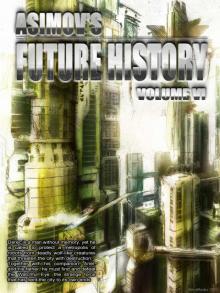 Asimov’s Future History Volume 6
Asimov’s Future History Volume 6 The Early Asimov. Volume 2
The Early Asimov. Volume 2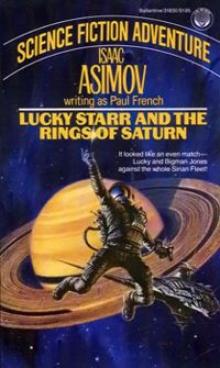 Lucky Starr And The Rings Of Saturn ls-6
Lucky Starr And The Rings Of Saturn ls-6 100 Malicious Little Mysteries
100 Malicious Little Mysteries Forward the Foundation f-2
Forward the Foundation f-2 I.Asimov: A Memoir
I.Asimov: A Memoir Foundation's Edge f-6
Foundation's Edge f-6 Lucky Starr and the Pirates of the Asteroids ls-2
Lucky Starr and the Pirates of the Asteroids ls-2 Robot City 1 & 2
Robot City 1 & 2 The Fourth Science Fiction Megapack
The Fourth Science Fiction Megapack Asimov’s Future History Volume 16
Asimov’s Future History Volume 16 The Dim Rumble
The Dim Rumble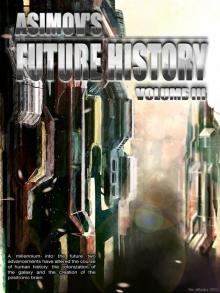 Asimov's Future History Volume 3
Asimov's Future History Volume 3 The Currents Of Space te-3
The Currents Of Space te-3 Asimov’s Guide To Shakespear. Volume 1
Asimov’s Guide To Shakespear. Volume 1 Asimov’s Future History Volume 13
Asimov’s Future History Volume 13 Asimov’s Future History Volume 12
Asimov’s Future History Volume 12 The Secret Sense
The Secret Sense Of Time and Space and Other Things
Of Time and Space and Other Things Norby tnc-2
Norby tnc-2 Norby The Mixed-Up Robot tnc-1
Norby The Mixed-Up Robot tnc-1 Misbegotten Missionary
Misbegotten Missionary Asimov’s Future History Volume 19
Asimov’s Future History Volume 19 Fantastic Voyage II: Destination Brain fv-2
Fantastic Voyage II: Destination Brain fv-2 Asimov’s Future History Volume 10
Asimov’s Future History Volume 10 Asimov's Future History Volume 2
Asimov's Future History Volume 2 Feeling of Power
Feeling of Power In the Beginning
In the Beginning The Caves of Steel trs-1
The Caves of Steel trs-1 Asimov's Future History Vol 2
Asimov's Future History Vol 2 Caliban c-1
Caliban c-1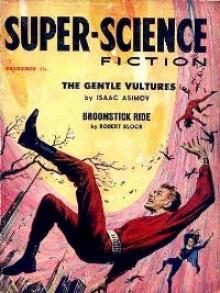 The Gentle Vultures
The Gentle Vultures Utopia c-3
Utopia c-3 Prelude to Foundation f-1
Prelude to Foundation f-1 Short Stories Vol.1
Short Stories Vol.1 Asimov’s Future History Volume 8
Asimov’s Future History Volume 8 Daneel Olivaw 4 - Robots and Empire
Daneel Olivaw 4 - Robots and Empire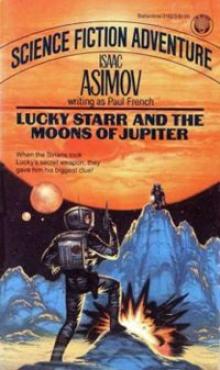 Lucky Starr The And The Moons of Jupiter ls-5
Lucky Starr The And The Moons of Jupiter ls-5 Gold
Gold Asimov’s Future History Volume 4
Asimov’s Future History Volume 4 Foundation and Empire f-4
Foundation and Empire f-4 Potential
Potential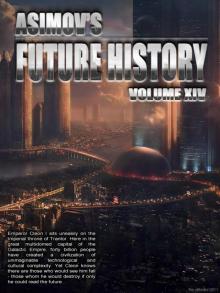 Asimov’s Future History Volume 14
Asimov’s Future History Volume 14 Asimov’s Future History Volume 7
Asimov’s Future History Volume 7 Daneel Olivaw 2 - The Naked Sun
Daneel Olivaw 2 - The Naked Sun Lucky Starr and the Pirates of the Asteroids
Lucky Starr and the Pirates of the Asteroids Foundation f-3
Foundation f-3 All the Troubles of the World
All the Troubles of the World Cleon the Emperor
Cleon the Emperor Asimov's Future History Volume 5
Asimov's Future History Volume 5 Asimov’s Future History Volume 20
Asimov’s Future History Volume 20 Robots and Empire trs-4
Robots and Empire trs-4 Profession
Profession It's Been a Good Life
It's Been a Good Life The Robots of Dawn trs-3
The Robots of Dawn trs-3 Lucky Starr And The Oceanf Of Venus ls-3
Lucky Starr And The Oceanf Of Venus ls-3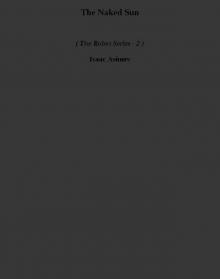 The Naked Sun trs-2
The Naked Sun trs-2 Asimov's Future History Volume 1
Asimov's Future History Volume 1